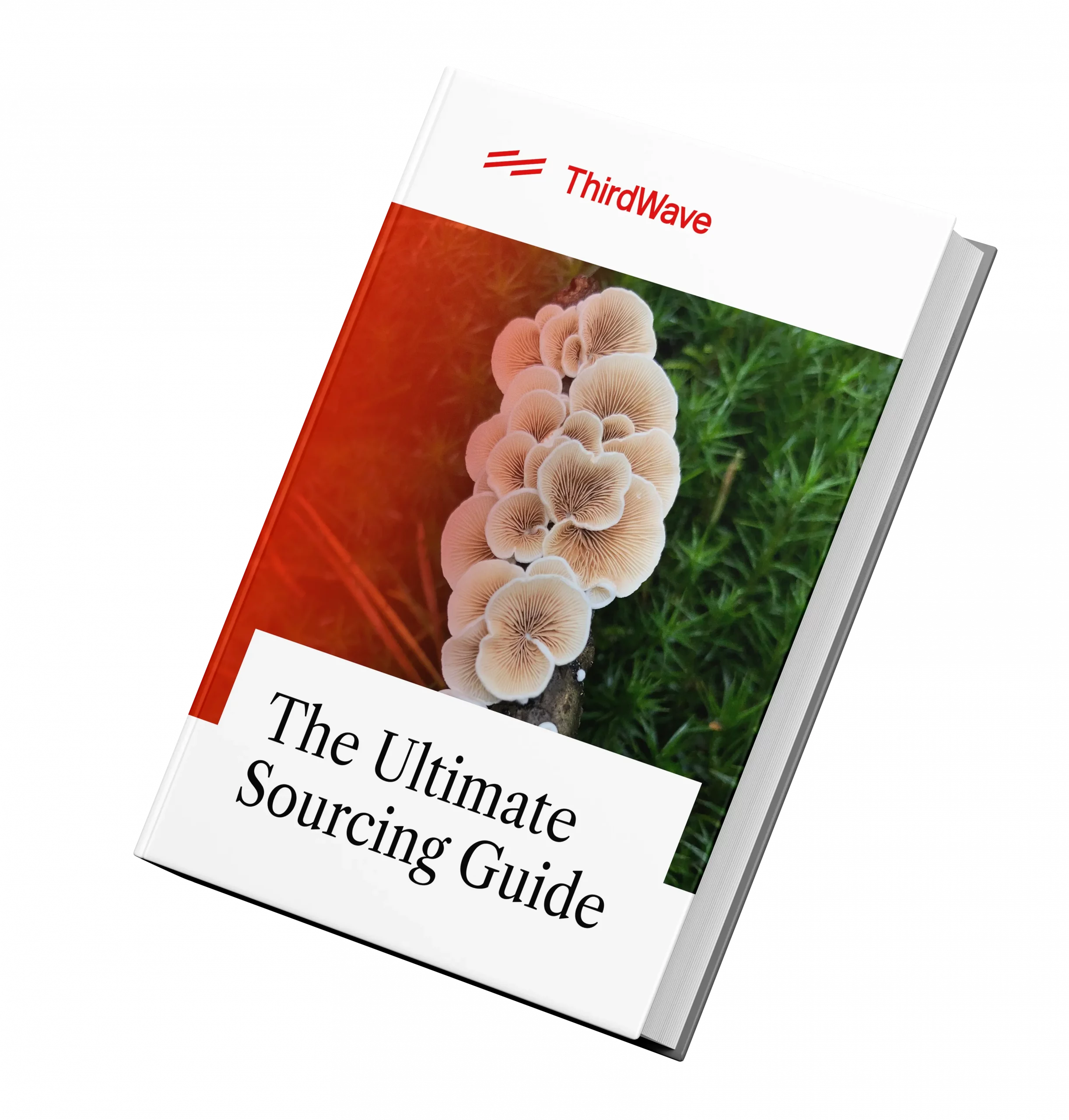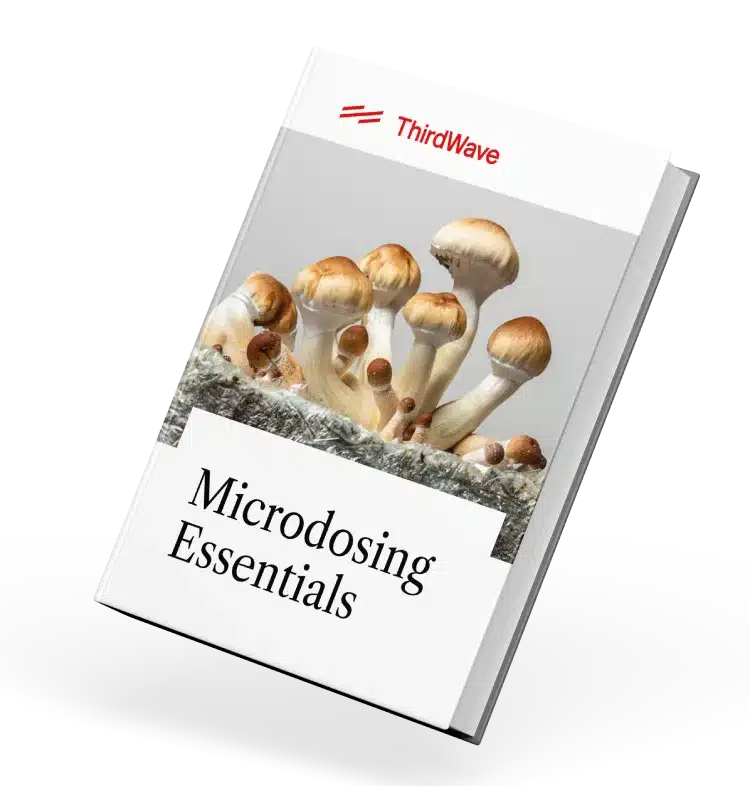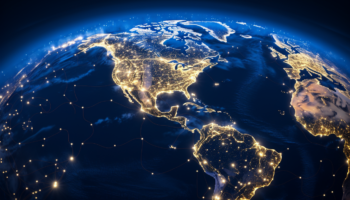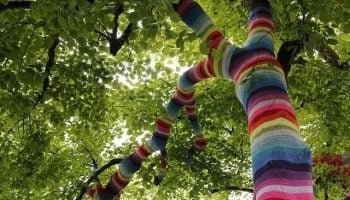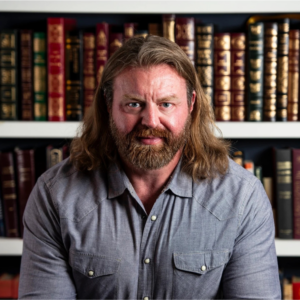The Ultimate Guide to
Ibogaine
Ibogaine is a potentially illegal substance, and we do not encourage or condone the use of this substance where it is against the law. However, we accept that illegal drug use occurs, and believe that offering responsible harm reduction information is imperative to keeping people safe. For that reason, this guide is designed to ensure the safety of those who decide to use the substance.
Overview
01These plants are used for medicinal and ritual purposes in African spiritual traditions of the Bwiti religion in Gabon. It was first promoted in the West as having anti-addictive properties in 1962 by Howard Lotsof, who was a heroin addict himself. In France it was marketed as Lambarène and used as a stimulant. The U.S. Central Intelligence Agency (CIA) also studied the effects of ibogaine in the 1950s.
Today, it is illegal in the United States as is considered a Schedule I drug. However, it’s available to varying degrees in many other countries, including Canada and Mexico, as well as several European countries. It’s primarily used in treating addiction for opiates and other highly-addictive drugs, though it is also becoming more common as a tool for personal and spiritual development. Recreational use of ibogaine is nearly non-existent.
Grow 1 Year's Worth of Microdoses in Just 6 Weeks
Third Wave partnered with top mycologists to create the world’s easiest and best mushroom growing program (kit, course, and expert support).
- Pre-sterilized and sealed
(ready to use out of the box) - Step-by-step video and text course
- Access to growing expert in community
- Make your first harvest in 4-6 weeks
- Average yield is 1 - 4 ounces (28-108g)
- Fits in a drawer or closet
- Enter info for Third Wave discounts:
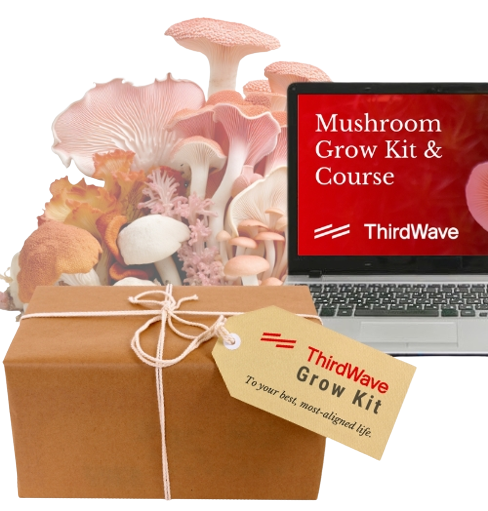
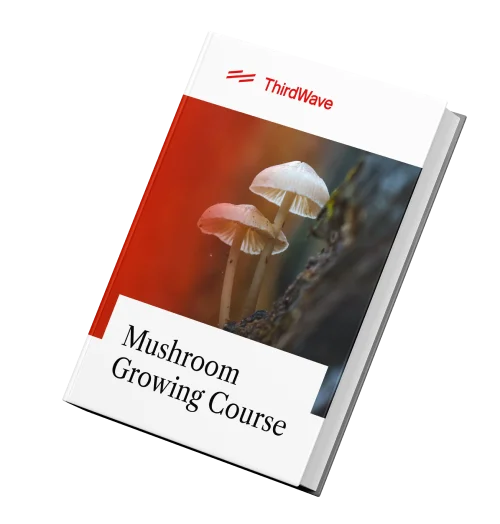
Grow 1 Year's Worth of Microdoses in Just 6 Weeks
Third Wave partnered with top mycologists to create the world’s easiest and best mushroom growing program (kit, course, and expert support).
- Pre-sterilized and sealed
(ready to use out of the box) - Step-by-step video and text course
- Access to experts in community
- Make your first harvest in 4-6 weeks
- Average yield is 1 - 4 ounces (28-108g)
- Fits in a drawer or closet
- Enter info for Third Wave discounts
Experience
02Ibogaine
Ibogaine is just one alkaloid from the iboga plant and is used almost exclusively in medical settings to treat addiction. It’s produced semi-synthetically, which ensures precise dosing. A typical dose is 15-20 mg per kg which is much less than its natural counterpart, making it crucial for people to be careful with their dosing.
The ibogaine experience can last 24 hours or more—and it isn’t known for being pleasant. One of the most immediate adverse effects you may feel is ataxia, or an inability to fluidly coordinate muscle movements. Nausea, dry mouth, dizziness, heartbeat irregularities, irregular breathing, and vomiting are also common side effects.
It’s best to lay down during an ibogaine experience, as sudden movements can lead to increased dizziness and nausea. You can expect to be in bed for the first 12 hours of your trip (phases 1 and 2 below). The first several hours will be intense before you start to come down as your body metabolizes the ibogaine.
A trip can be broken down into three phases:
- Acute, “awakened dream state” phase
- Evaluative or reflective phase
- Residual stimulation phase [1]
Phase 1: Acute phase. The acute phase begins 1 to 3 hours after taking ibogaine and can last 4 to 8 hours. Most report a “panoramic,” mostly visual experience of past memories during this time. It’s often described as a “waking dream” state with varying experiences that might include contact with transcendent beings, passage along a lengthy path, or floating.
People often report being placed in or entering visual landscapes, rather than experiencing intrusive visual or auditory hallucinations. Not all subjects experience visual phenomena, which may be related to dose, bioavailability, and interindividual variation.
Phase 2: Evaluative phase. The evaluative phase begins approximately 4 to 8 hours after taking ibogaine and can last 8 to 20 hours. People often report recalling fewer memories in this phase along with a more neutral and reflective emotional tone. Attention is directed at evaluating the experiences of the acute phase. Many prefer as little environmental stimuli during this phase and the acute phase as it’s easy to become agitated or annoyed by distractions.
Phase 3: Residual stimulation phase. The residual stimulation phase begins approximately 12 to 24 hours after taking ibogaine and can last 24 to 72 hours or more. Attention shifts back to the external environment during this phase while the subjective psychoactive experience begins to fade. Normal movement returns and people often report heightened arousal and vigilance during this period as well. Some say their need for sleep drops for several days to weeks following treatment.
After a trip is complete, a window of heightened introspection opens that can last several days to weeks, allowing the person to integrate these new perspectives about the issues they face into their daily lives.
Iboga
While ibogaine is an isolated alkaloid extracted from the iboga plant, iboga itself contains 11 more alkaloids that many believe are essential elements of the plant’s therapeutic qualities. Some research shows that the alkaloid tabernanthine, for example, may have active properties similar to ibogaine. These additional alkaloids also make for a more hallucinatory experience, which is one reason iboga is considered a plant medicine capable of fostering personal and spiritual growth rather than just treating addiction. However, iboga has successfully been used in the treatment of addiction and ibogaine has been used for other forms of psychological healing.
Doses of iboga range between 5-100 grams depending on what is being treated. This can require the consumption of a large amount of iboga root bark, which can be difficult as well as unpredictable—the amount of active chemicals varies between individual plants, making it hard to administer the right amount. Consuming so much of the bark also seems more likely to cause the adverse physical symptoms associated with ibogaine, including nausea, vomiting, and loss of muscle control. But many believe these effects are an important element of the therapeutic outcome—less purging, less healing.
The phases of the iboga journey are similar to ibogaine, but with a heightened intensity. Though ibogaine does produce visuals, iboga is known for its intense psychedelic experience and vivid hallucinations. With a large dose, the course of the iboga journey will also be longer than that of ibogaine. It’s common for the experience to last 72 hours, and for the afterglow to last for weeks. For these reasons, it’s believed that half the people who take ibogaine will not have a typically spiritual experience.
Effects
03Pharmacology
Ibogaine interacts with several neurotransmitter systems simultaneously with its highest affinity being for the sigma-2 receptor. It has a moderate affinity for opioid receptors and a moderate-to-low affinity for serotonin receptors. [2]
Ibogaine is metabolized by the body into noribogaine, which acts to increase the availability of serotonin in the brain.
Interactions with other drugs
Ibogaine is metabolized in part by the awkwardly named enzyme cytochrome P4502D6, which is involved in the metabolism of a whole host of other medications and chemicals in the body. That means the list of ibogaine’s dangerous interactions is long.
The risk of experiencing cardiac complications or other dangerous side effects increases when ibogaine is taken in conjunction with antiarrhythmic drugs, anti-depressants, anti-psychotics, and more.[3] Cardiac complications can also be triggered by foods containing bergamottin or bergamot oil, such as grapefruit juice, as well as a variety of other supplements and over-the-counter medications, including Prilosec (Omeprazole), some gastric disorder drugs, anti-fungal medications, HIV treatment drugs, and some antihistamines. This is by no means a complete list of dangerous interactions with ibogaine, and use of the drug should only be considered after proper medical screening and with proper medical support.
Benefits & Risks
04Potential Benefits
Iboga
Like many psychedelics, iboga has traditionally been used in ceremonial and religious contexts to connect the user to a higher level of spirituality and a deeper understanding of the self. This usually comes about due to the personal insights gained in the egoless state that iboga can produce—people often receive powerful insights into the personal issues they’re facing and feel a greater connection to the world around them. In this context, iboga can help spark personal growth in myriad forms—it’s helped people deal with depression, anxiety, PTSD, indulgent behaviors, and much more.
Ibogaine
Ibogaine is more widely known as a treatment for addiction, which is becoming more prevalent and in-demand as anecdotal and some clinical evidence suggests its efficacy. Though it’s by no means a panacea for chronic substance use disorders, it does have a high success rate when it comes to easing the withdrawal process for people detoxing from opiates, cocaine, amphetamines, and alcohol. For some, the ibogaine experience completely erases withdrawal symptoms, while many others simply experience less intense cravings. While more research is needed to determine exactly how effective ibogaine treatment is for both addiction and personal benefit, its potential as an agent for healing and change is promising.
Risks
Ibogaine is one of the most powerful and medically volatile medicines, according to author and plant medicine facilitator Elizabeth Bast. While that makes its therapeutic potential high, ibogaine use isn’t without risk and must be treated with care and attention. Reports of toxicity-related complications caused by ibogaine have largely been due to previous medical conditions (mostly cardiac), as well as drug-drug interactions. It is very important to avoid using ibogaine if you have a pre-existing heart condition. The combination can be lethal.[4]
A review that looked at medical records from 1990 to 2008 found that 19 people died anywhere from about an hour to three days after using ibogaine. However, none of these deaths could be attributed to toxic effects of the drug itself, but rather to interactions either with prior medical conditions or other drugs.[5]
However, there are also reports of people suffering a fatal reaction to ibogaine even after a medical screening. It’s estimated that up to 1 in 400 people who take ibogaine suffer a fatal reaction, which makes it a higher risk endeavor than most extreme sports.
For drug addiction treatment, ibogaine should only be taken under the direct supervision of a trained medical professional. The Global Ibogaine Therapy Alliance recently established criteria that require a physician’s assessment before a patient can undergo treatment.
In Third Wave’s Ultimate Guide to Safely Sourcing Psychedelics, you will discover an astonishing menu of psychedelic medicines… In Third Wave’s Ultimate Guide to Safely Sourcing Psychedelics, you will discover an astonishing menu of psychedelic medicines… Beyond LSD and Psilocybin is a field. This guide will take you there.
…and how to source them without legal risk. Beyond LSD and Psilocybin is a field. This guide will take you there.
…and how to source them without legal risk.
Therapeutic Use
05Some people have experienced the permanent eradication of withdrawal symptoms after a single treatment session, but more often, cravings and other symptoms return after a few weeks or months, but at greatly reduced intensities.
Research into ibogaine’s therapeutic potential is limited, though. The drug is categorized as a Schedule I drug in the U.S., and since NIDA pulled research funding for ibogaine as a possible addiction treatment in 1995, there have been no systematic controlled trials on its anti-addictive effects and efficacy in the U.S. or Europe.
An abundance of anecdotal reports fly in the face of the “conventional wisdom” of the feds, however. Ibogaine is officially considered a Schedule I drug because its hallucinogenic effects supposedly give it a high potential for abuse.[6] But reports from heroin addicts who have taken single doses to help treat their addictions say they experience no addictive side effects and, to the contrary, rarely describe it as a pleasurable experience worth repeating in a recreational setting. One woman said of her experience, “I wouldn’t recommend it to somebody who is trying to have fun. If you want your body to explode into 1,000 pieces and rebuild itself into something beautiful, then yeah—but don’t expect it to be pleasant.”
A number of case studies also give promise to ibogaine’s potential use in treating addictive disorders. It’s been used to aid and ease withdrawal symptoms during detoxification for heroin and cocaine addicts prior to entering rehab.[7] Other reported case studies and preclinical trials of ibogaine treatment have been largely successful with heroin, cocaine, and amphetamine addiction.[8][9]
Two recent studies also showed that a single ibogaine treatment can successfully reduce withdrawal symptoms in opiate addicts, and help keep their cravings at bay for months afterwards.
The largest observational study of ibogaine’s potential benefits in the treatment of addiction suggests the treatment could significantly improve opioid abstinence in sufferers of chronic addiction. Of 88 subjects interviewed, 80% reported that ibogaine either drastically reduced or totally abated their withdrawal symptoms, with 30% abstaining from opioid use for years following the treatment.[10]
A vocal minority of psychiatrists and researchers have started pushing for more controlled clinical trials in order to explore the use of ibogaine in treating an array of disorders. More small clinical trials are either in progress or planned for the near future, and several companies are working to take ibogaine to market. Canadian startup MindMed, for example, has developed a synthetic drug based on the chemical structure of ibogaine to treat addiction called 18-MC (18-methoxycoronaridine). The company will also conduct FDA-approved Phase II trials using the drug to treat opioid use disorders. Then there’s the U.S.-based pharmaceutical company DemeRx, which is working on developing ibogaine and noribogaine (the main psychoactive metabolite in ibogaine) into oral, non-addicting drugs for opioid dependence.
Ibogaine could be particularly useful in light of America’s widespread opioid crisis[22]. The federal government continues to fight on the losing side of the drug war as more and more people find themselves addicted to legal prescription drugs. Recent years saw a spike in heroin use as people addicted to prescription painkillers sought out higher highs. Currently, the heroin epidemic is giving way to a recent wave of fentanyl addiction, a synthetic drug 50 times more potent than heroin, marketed and sold as a prescription analgesic.
Ibogaine, on the other hand, shows virtually zero potential for abuse and, simultaneously, has given tremendous promise in the treatment of these issues.
Ibogaine success rate
Due to its status as a Schedule I drug, ibogaine has primarily been used as a treatment for addiction in non-traditional clinical settings outside of the United States. Statistics on its efficacy, therefore, are somewhat difficult to come by.
Two studies conducted by MAPS in Mexico and New Zealand found significant long-term reduction of withdrawal symptoms in 20% and 50% of participants, respectively.[11]
Another recent study in Brazil found that a combination of ibogaine and psychotherapy led to the long-term reduction of symptoms in over 60% of participants, highlighting ibogaine’s potential as a supplementary tool in overcoming addiction.[12]
A recent observational study of people with chronic addiction from the Johns Hopkins School of Medicine also suggests that ibogaine treatment can significantly improve opioid abstinence. Of 88 subjects interviewed, 80% reported that ibogaine either drastically reduced or totally abated their withdrawal symptoms, with 30% abstaining from opioid use for years following the treatment.[10]
In combination with social support and a structured treatment plan that focuses on long-term goals, ibogaine is showing tremendous promise in treating addiction.
Ibogaine treatment centers
As of now, there are some 75 to 100 ibogaine treatment facilities around the world. In recent years, new treatment centers outside of the United States have been popping up quickly to meet the growing demand for ibogaine treatment.
Choosing a treatment facility depends somewhat on a host of personal decisions and preferences, but any treatment center you consider should, first and foremost, adhere to the guidelines set forth by The Global Ibogaine Therapy Alliance for clinical treatment with ibogaine.
Like any industry that sees rapid expansion, there are varying degrees of quality and efficacy in the ibogaine treatment industry. Also like other areas of the healthcare industry, it’s not without its unethical players. Due diligence is required to find the facility and provider that best fits your individual needs. Below is a list of a handful with an established track record that have received good reviews for their quality of treatment and high ethical standards. These are not recommendations, but a starting point for your own research.
Ibogaine Treatment Centers in Canada
- Sacred Soul Therapy House – Vancouver, Canada
- Toronto Ibogaine Centre – Toronto, Canada
- Liberty Root Ibogaine Therapy – Vancouver, Canada
Ibogaine Treatment Centers in Mexico and Caribbean
- Crossroads Treatment Center – Bahamas, Caribbean
- Clear Skies Recovery – Cancun, Mexico
- Experience Treatment Center – Rosarito, Mexico
- Holistic Hope House – Rosarito, Mexico
Ibogaine Treatment Centers in Europe
- Tabula Rasa – Portugal
- Iboga Tree Healing House – Portugal
See our essential guide to ibogaine treatment for more information.
If you would like to experience ibogaine in a legal, therapeutic environment, Third Wave has created its own psychedelic provider directory for you to find curated iboga retreats. All retreats listed have either been verified or rigorously vetted by the Third Wave team, so you can feel confident knowing that these retreats are worth considering in this vulnerable and transformative experience.
Personal Growth
06Like many other psychedelics, ibogaine has the ability to temporarily shatter the ego, giving you more perspective on the interconnectedness of the world around you and taking power from the petty problems of daily life. During these brief periods of egolessness, people often receive powerful insights into the personal issues they’re facing—and the insights needed to move forward.
In the acute and reflective phases of an ibogaine session, people also often experience intellectual insights into their emotional problems. Deeply repressed pain and trauma rise to the surface. While this can be difficult and emotionally turbulent, it often allows people to confront their demons. It’s helped people deal with depression, anxiety, PTSD, addiction to shopping, sex, food and much more. Others have used it to overcome chronic pain related to diseases like fibromyalgia and multiple sclerosis (MS), though little clinical data exists on this use case.
While ibogaine can be an intense and unsettling experience, most people also report that they feel a simultaneous sense of peace and calm, and a greater connection to the universe that can last long after the session has ended.
Legality
07Although illegal in the United States, iboga can be consumed with relative freedom in the City of Oakland, CA. On June 4, 2019, the city council voted unanimously to decriminalize all “entheogenic plants” containing indoleamines, tryptamines, and phenethylamines. This allows adults aged 21 years and older to use them either medicinally (in accordance with the resolution’s official intent) or for any other reason without fear of criminal punishment. It also specifically decriminalizes (or rather deprioritizes for law enforcement) their cultivation and distribution.[13][14]
Ibogaine is also legal to possess and distribute in Brazil, Mexico, South Africa, Gabon, New Zealand, the Netherlands, and Costa Rica. Treatment centers exist in most of these countries.
For a full guide to the legality of ibogaine worldwide, click here.
Ethical Considerations
08Sustainability of the Iboga Plant
Due to a confluence of factors, the iboga plant population is facing pressure in its native habitat in Gabon. One problem is the destruction of habitat due to widespread deforestation to claim farmland. Deforestation is also endangering elephants, which are crucial in spreading the iboga seed.
Another problem is the worldwide opioid addiction epidemic, which is increasing demand for the healing powers of ibogaine and, therefore, the iboga plant. As many as 160 million people around the world are currently battling some form of opioid addiction and, by some estimates, there are between 75 and 100 ibogaine treatment centers around the world, and this number continues to grow.[15] The creation of a profitable ibogaine market in response to this epidemic has led to a spike in the number of harvesters and distributors of the iboga plant which, in turn, has led to a shortage in some areas and subsequent rapid price increases.
The Global Ibogaine Therapy Alliance is pushing for conservation measures and the establishment of greenhouses in other countries that can support the effort. It is possible, however, that the iboga plant could disappear from the public realm in a matter of a few short years—and with it, an ancient religious tradition.
Cultural Appropriation
While ibogaine clinics outside of Gabon—many of them in Mexico—have been instrumental in rehabilitating thousands of addicts, it’s often with little to no acknowledgment of the sacred cultural practices of the Iboga plant that date back possibly thousands of years. Add to that the history of oppressive European colonialism in the region and the concerns over the cultural appropriation of the Iboga plant are arguably justified.
Enterprising outsiders have also successfully leveraged markets to expand the healing powers of Ibogaine across the globe, which should be commended. However, many of the shamans and other practitioners native to Gabon who carry on the ancient traditions of the Iboga plant remain impoverished.
The force of globalization can’t be stopped at this point, and so iboga and other traditional practices will continue to be spread across the planet. It’s up to us outsiders to ensure that it’s done in a more respectful manner than it has been in many cases to date.
History & Stats
09From the 1930s to 1960s, ibogaine was sold as a stimulant in France under the brand name Lambarène, which was an extract of the Tabernanthe manii plant. However, in 1966, it was taken off the market when France prohibited the sale of all ibogaine-containing products.
Around the same time, the World Health Assembly classified ibogaine as a “substance likely to cause dependency or endanger human health,” and the Food and Drug Administration (FDA) designated ibogaine Schedule I.
Ibogaine’s anti-addictive effects were discovered accidentally in the 1960s by a 19-year-old heroin addict named Howard Lotsof. He and five of his addict friends all noticed a reduction of their heroin craving and withdrawal symptoms after taking ibogaine for recreational purposes.
Being the enterprising heroin addict that he was, Lotsof signed a contract with a Belgian pharmaceutical company to produce a tablet for clinical trials in the Netherlands. In 1985, he was awarded a United States patent for the product.
In 1981, 44 kg of iboga extract was produced by an unnamed European manufacturer. The entire stock was purchased by a single buyer, Carl Waltenburg, who distributed it as “Indra extract” to treat heroin addicts in Christiania, Denmark, a small village with a high number of heroin addicts. A number of local movements took hold in the early- to mid-1990s in offshore locations from the US, mostly aimed at treating heroin addicts. In total, more than 3,000 private clinics and retreats were established and an entire “medical subculture” flourished. Accounts of individuals fighting and overcoming addiction proliferated.[16]
In the early 1990s, the National Institute on Drug Abuse (NIDA) funded and conducted animal trials with ibogaine in the US, although the doses used were considerably higher than effective human doses.[17] Despite safety concerns highlighted by these trials, phase I clinical trials were carried out using ibogaine to treat opioid addicts. Between 1992 and 1993, a cohort of 33 heroin addicts were treated with 6 to 29 mg/kg of ibogaine. Of this group, 25 showed resolution of opioid withdrawal symptoms 24 to 72 hours after their treatment. However, a 24-year-old female who received the highest dosage died.[18] This death raised safety concerns around ibogaine treatment.
Later studies have found that lower doses (10-12 mg/kg) significantly reduced withdrawal scores in heroin, cocaine and opiate addicts, which appeared to be sustained after at least one month.[19]
While ibogaine is illegal in the United States today, it is available as a prescribed anti-addiction treatment in many countries, including Canada, South Africa, the Netherlands, Mexico, Norway, and the U.K. among others.[20]
To find legal ibogaine retreat centers for addiction or personal growth, check out Third Wave’s vetted directory of providers worldwide.
Myths
10“Ibogaine can be lethal for unknown reasons.”
It is true that people have died after using ibogaine, but not for unknown reasons. While a review of cases outside of West Africa found 19 known deaths following ibogaine use between 1990 and 2008, there was no evidence to suggest that toxic effects were to blame.[21] Instead, the majority of the deaths involved preexisting heart conditions and the rest were either determined to be or likely because of lethal interactions with other drugs.
It’s important that you don’t use ibogaine if you have a history of heart disease or are currently taking certain other substances.
“Ibogaine can cure chronic addiction.”
Ibogaine’s potential as a treatment for addiction is promising, but calling it a “cure” would be going too far. Instead, ibogaine is often considered an addiction “interrupter,” as it eliminates or greatly reduces withdrawal symptoms of opiates, cocaine, amphetamines, and alcohol, making the road to recovery smoother. Some people have experienced the permanent eradication of withdrawal symptoms after a single treatment session, but more often, cravings and other symptoms return after a few weeks or months, but at greatly reduced intensities.
Like other psychedelics, ibogaine also has the ability to temporarily shatter the ego, giving the user more perspective on the interconnectedness of the world around them. During these brief periods of egolessness, people often receive powerful insights into the personal issues they’re facing—and the insights needed to move forward. This has proven useful in the treatment of many psychological issues, including addiction.
FAQ
11Can it be detected in a drug test?
There are currently no known urine or blood tests on the market for ibogaine. Also, ibogaine is not chemically similar to commonly-tested drugs, so its presence is very unlikely to trigger positive results for other drugs during a standard screen.
Are there risks involved?
There is a significant risk of taking ibogaine if you have a heart condition. It has been known to cause deaths by temporarily changing the way the heart functions. Do not take it if you have a heart condition. It’s estimated that up to 1 in 400 people to take ibogaine suffer a fatal reaction – a higher risk than most extreme sports.
Can it only be used to treat addiction?
Ibogaine’s main therapeutic role is in the treatment of addiction, but the experience can be meaningful in other ways too. It can provide you with a form of introspection that can help you address harmful practices in your life, and many people report that it helps them see the unpleasant parts of their lives, allowing them to make a change for the better.
Where can I find a treatment center?
There are many ibogaine treatment centers around the world, but it’s important to be cautious in selecting a legitimate, respectable place. Look up their credentials and reviews before making a decision. These are some treatment centers we’ve heard good things about:
- Sacred Soul Therapy House – Vancouver, Canada
- Toronto Ibogaine Centre – Toronto, Canada
- Liberty Root Ibogaine Therapy – Vancouver, Canada
- Crossroads Treatment Center – Bahamas, Carribbean
- Clear Skies Recovery – Cancun, Mexico
Don’t forget to read our essential guide on ibogaine treatment.
To support your journey with experiencing ibogaine legally, we’ve also curated, verified, and vetted legal iboga retreats in our psychedelic provider directory; maybe you can find the right one for you.
Footnotes
10[1] ICEERS Ibogaine Scientific Literature Overview (2012).
[2] Mach, R. H., Smith, C. R., & Childers, S. R. (1995). Ibogaine possesses a selective affinity for σ2 receptors. Life Sciences, 57(4), PL57–PL62. Retrieved from https://doi.org/10.1016/0024-3205(95)00301-L
[3] Medications (that compete with Ibogaine).
[4] Litjens, R. P. W., & Brunt, T. M. (2016). How toxic is ibogaine? Clinical Toxicology (Philadelphia, Pa.), 54(4), 297–302. Retrieved from https://doi.org/10.3109/15563650.2016.1138226
[5] Alper, K. R., Stajić, M., & Gill, J. R. (2012). Fatalities temporally associated with the ingestion of ibogaine. Journal of Forensic Sciences, 57(2), 398–412. Retrieved from http://dx.doi.org/10.1111/j.1556-4029.2011.02008.x
[6] Never mind that methadone and buprenorphine, the most popular legal treatments for heroin addicts in the United States, can be just as addictive as heroin itself.
[7] Mash, D. C., Kovera, C. A., Pablo, J., Tyndale, R. F., Ervin, F. D., Williams, I. C., … Mayor, M. (2000). Ibogaine: complex pharmacokinetics, concerns for safety, and preliminary efficacy measures. Annals of the New York Academy of Sciences, 914(1), 394–401. Retrieved from https://doi.org/10.1111/j.1749-6632.2000.tb05213.x
[8] Lotsof, H. S., & Alexander, N. E. (2001). Case studies of ibogaine treatment: implications for patient management strategies. Alkaloids. New York Academic Press, 56, 293–313. Retrieved from https://doi.org/10.1016/s0099-9598(01)56020-4
[9] Brown, T. K. (2013). Ibogaine in the treatment of substance dependence. Current Drug Abuse Reviews, 6(1), 3–16. Retrieved from https://doi.org/10.2174/15672050113109990001
[10] Davis et al (2017). Subjective effectiveness of ibogaine treatment for problematic opioid consumption: Short- and long-term outcomes and current psychological functioning. J Psychedelic Studies 1(2), 65-73. Retrieved from https://dx.doi.org/10.1556%2F2054.01.2017.009
[11] MAPS – Ibogaine Therapy for Drug Addiction.
[12] Schenberg, E. E., de Castro Comis, M. A., Chaves, B. R., & da Silveira, D. X. (2014). Treating drug dependence with the aid of ibogaine: A retrospective study. Journal of Psychopharmacology, 28(11), 993–1000. Retrieved from https://doi.org/10.1177/0269881114552713
[13] AP. (2019, Jun 5). The Latest: Oakland 2nd US city to legalize magic mushrooms. Retrieved from https://www.apnews.com/ff023dfbf4534eba8622f504d272ff00.
[14] Decriminalize Nature Oakland. Resolution. Retrieved from https://www.decriminalizenature.org/dno-resolution.
[15] Addiction-Fighting Iboga Plant Is Disappearing From The Wild.
[16] Alper, K. R., Lotsof, H. S., & Kaplan, C. D. (2008). The ibogaine medical subculture. Journal of Ethnopharmacology, 115(1), 9–24. Retrieved from https://doi.org/10.1016/j.jep.2007.08.034
[17] Molinari et al (1996). Ibogaine neurotoxicity: a re-evaluation. Brain Res, 737(1-2):255-62. Retrieved from https://doi.org/10.1016/0006-8993(96)00739-1
[18] Alper, K. R., Lotsof, H. S., Frenken, G., Luciano, D. J., & Bastiaans, J. (1999). Treatment of acute opioid withdrawal with ibogaine. The American Journal on Addictions, 8(3), 234–242. Retrieved from https://doi.org/10.1080/105504999305848
[19] Mash, D. C., Kovera, C. A., Pablo, J., Tyndale, R. F., Ervin, F. D., Williams, I. C., … Mayor, M. (2000). Ibogaine: complex pharmacokinetics, concerns for safety, and preliminary efficacy measures. Annals of the New York Academy of Sciences, 914(1), 394–401. Retrieved from https://doi.org/10.1111/j.1749-6632.2000.tb05213.x
[20] Tabo, T. (2014). Who’s To Blame For Ibogaine? A Debate Over Whether Big Government Or Big Pharma Is Keeping Heroin Addicts From Getting Well.
[21] Alper, K. R., Stajić, M., & Gill, J. R. (2012). Fatalities temporally associated with the ingestion of ibogaine. Journal of Forensic Sciences, 57(2), 398–412. Retrieved from http://dx.doi.org/10.1111/j.1556-4029.2011.02008.x
[22] The testimony of NIDA Director, Nora D. Volkow, M.D., and other senior staff before congress. https://nida.nih.gov/about-nida/legislative-activities/testimony-to-congress
